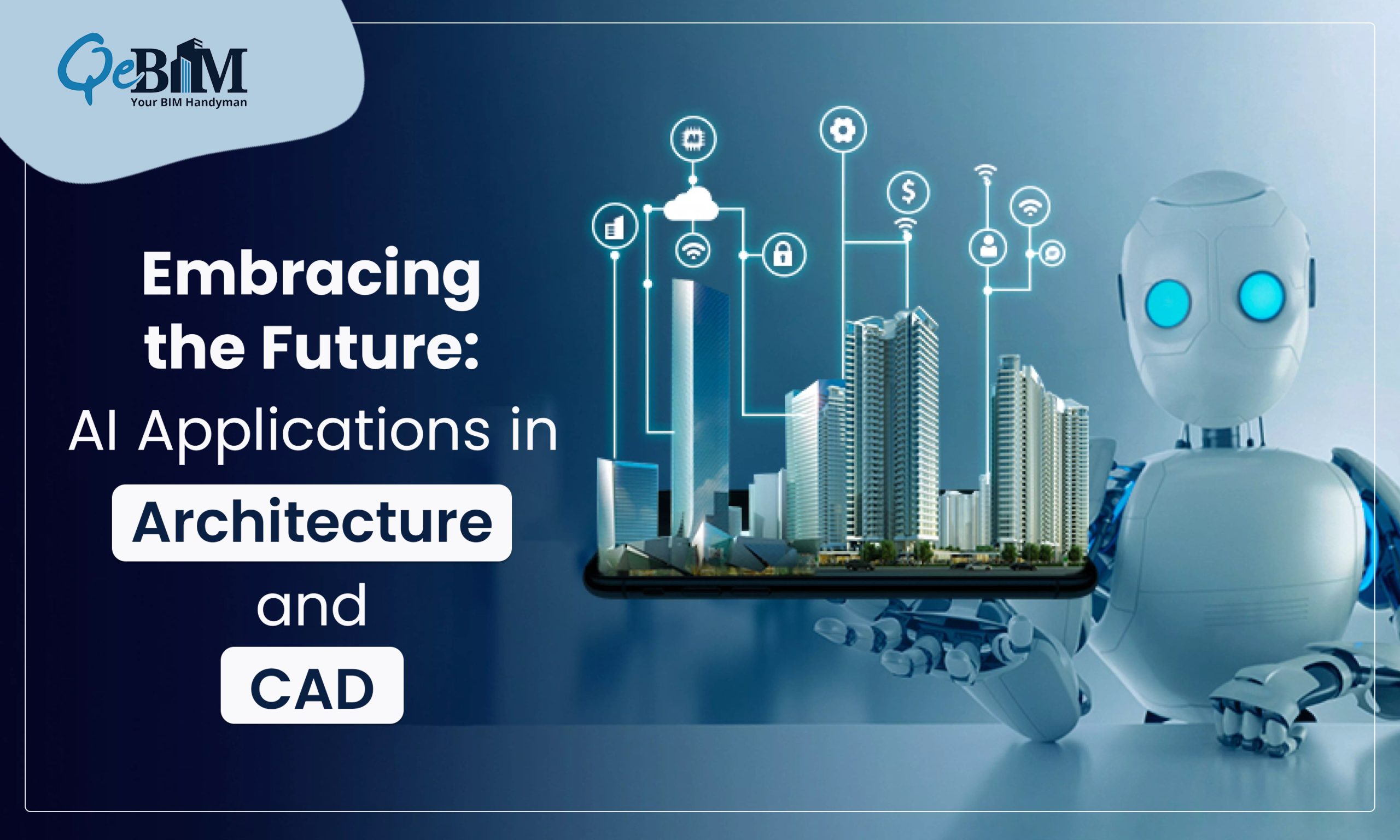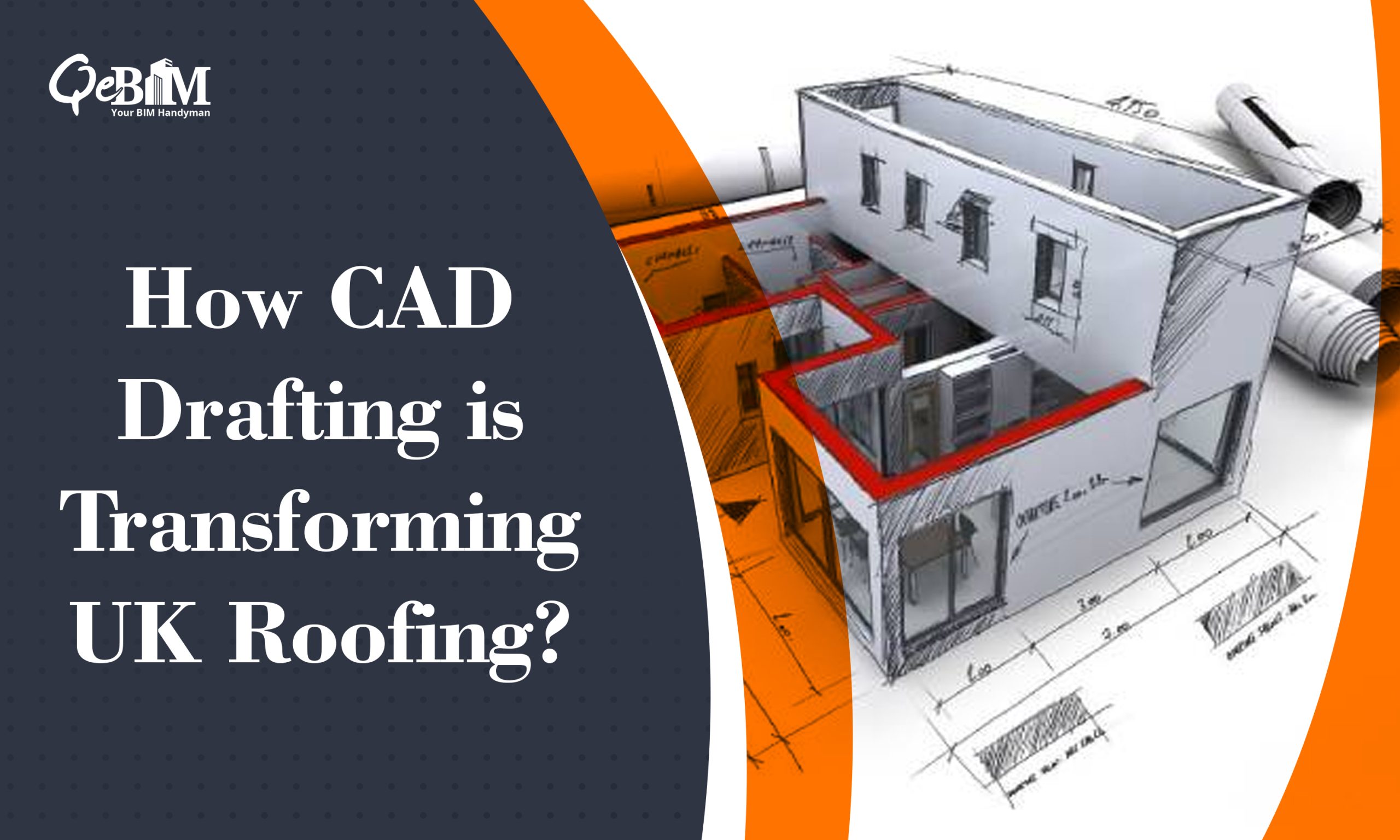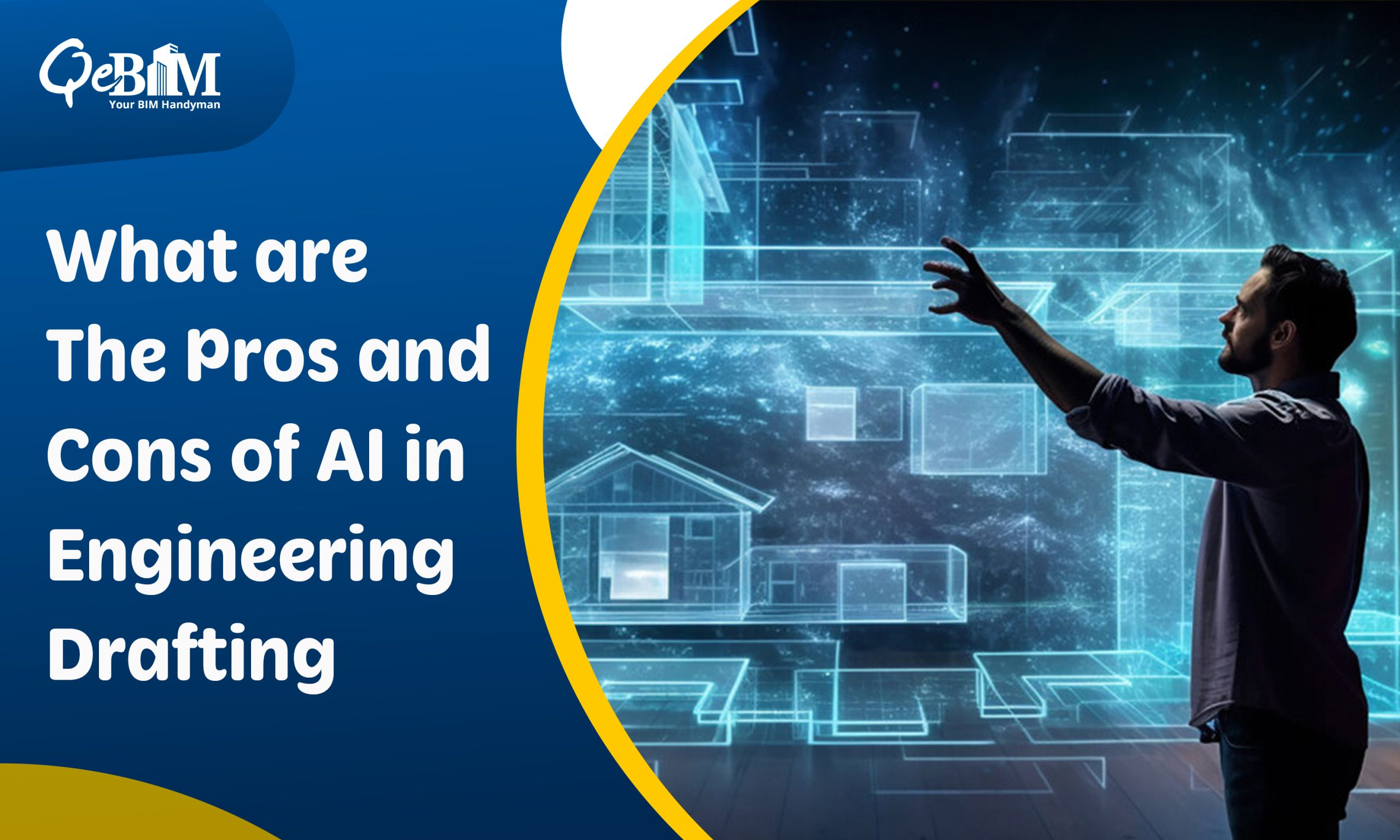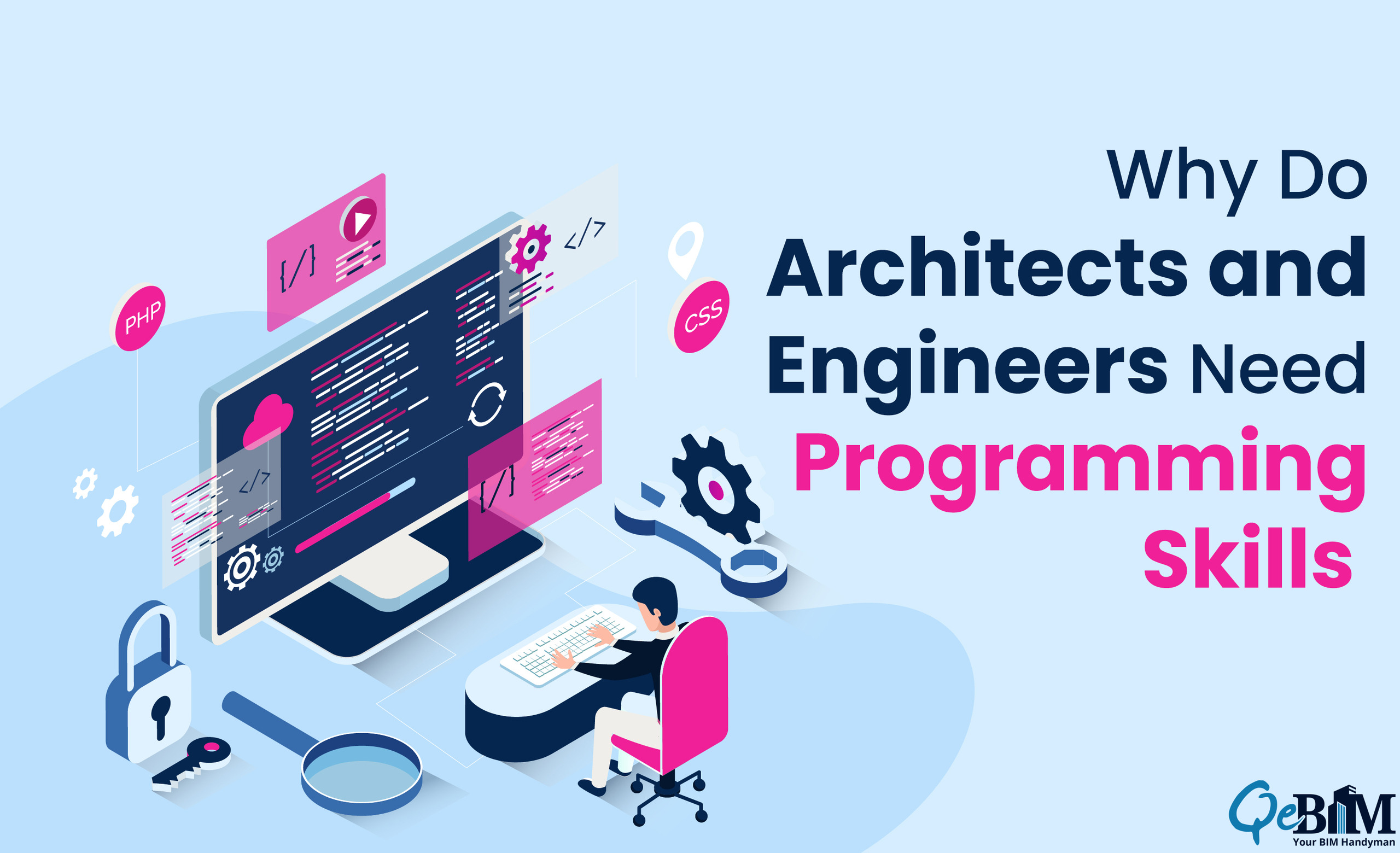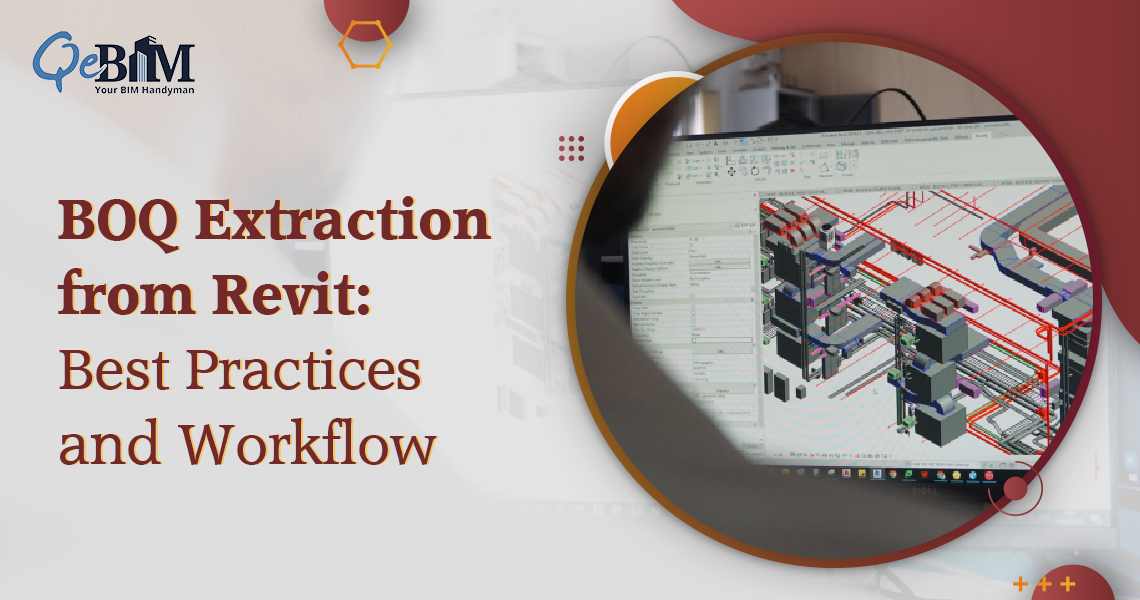Introduction
The realm of architecture and computer-aided design (CAD) has undergone a remarkable transformation with Artificial Intelligence (AI) integration. Sources indicate that 31% of enterprises are poised to incorporate Artificial Intelligence (AI) into their operations in upcoming years. This rapid expansion of AI is particularly thrilling as it permeates diverse industries, including healthcare, medicine, manufacturing, retail, engineering, computation, and architecture. As AI advances, it has revolutionized how architects and designers approach their projects, making the process more efficient, cost-effective, and innovative. In this blog, we will explore the various AI applications in architecture and CAD Drafting Services, backed by compelling statistics demonstrating this technology’s positive impact on the industry.
1) Generative Design
Generative design is a prime example of how AI is reshaping architectural practices. This technology employs algorithms to explore numerous design options and generate solutions based on pre-defined parameters and constraints. Architects can input specific criteria, such as sustainability, material usage, or structural integrity, and AI-driven generative design tools can propose optimized and creative designs.
Statistics:
- According to Autodesk, an early adopter of generative design, the technology has the potential to reduce the weight of a component by up to 40% while maintaining its structural integrity.
- A Gartner report predicts that by 2023, 30% of architects will use generative design software to automate and optimize their designs, leading to more resource-efficient buildings.
2) Enhanced 3D Modeling and Visualization
AI has significantly improved 3D modeling and visualization in the architectural field. AI-powered algorithms and Architectural BIM Services can process and analyze vast amounts of data, turning raw data into detailed and realistic 3D models. Moreover, AI-driven rendering tools can create stunning visualizations that offer clients a more immersive experience, enabling them to understand the design better before it’s constructed.
Statistics:
- A study by Harvard Business Review found that using virtual reality (VR) for design visualization helps stakeholders detect design errors and make informed decisions, resulting in a 13% reduction in project costs and a 23% decrease in construction time.
- AI-based real-time rendering tools, like NVIDIA’s RTX technology, can achieve up to 25 times faster rendering speeds compared to traditional methods, significantly speeding up the design iteration process.
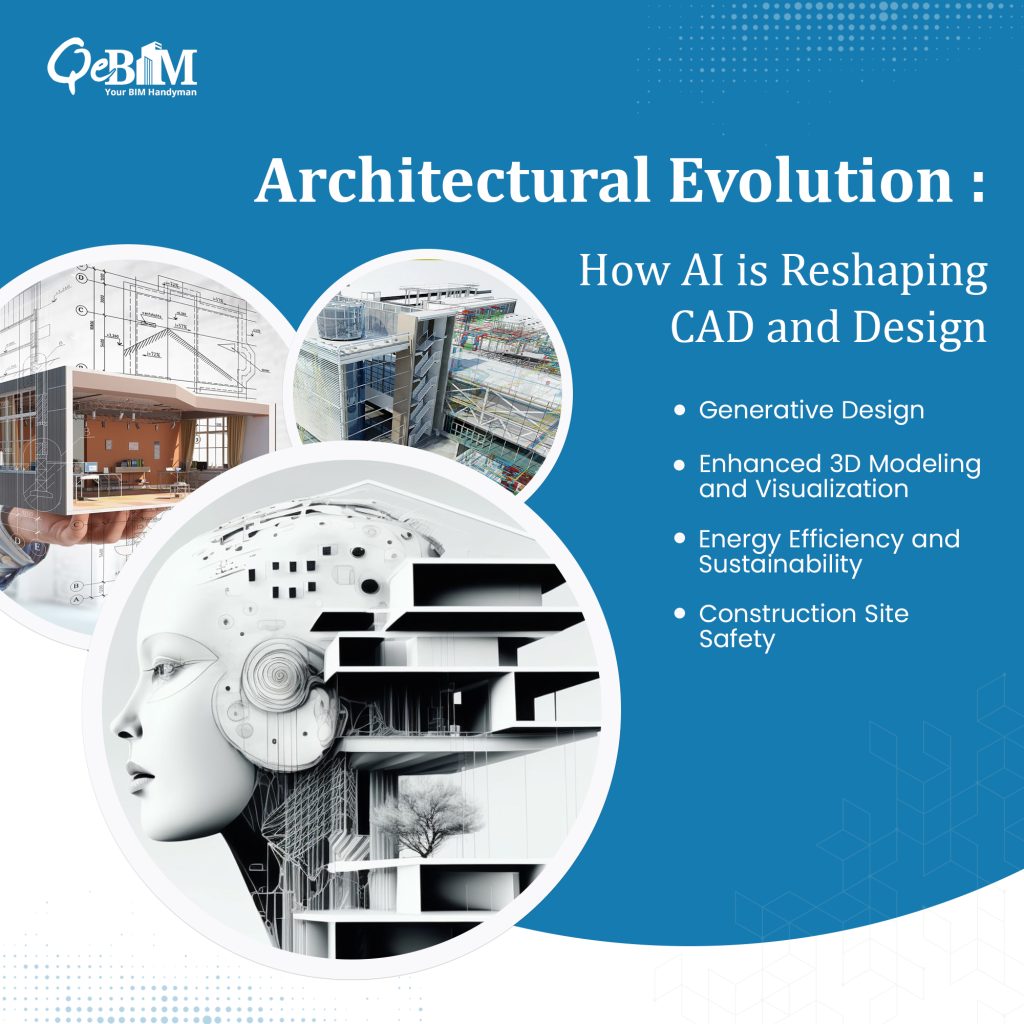
3) Energy Efficiency and Sustainability
With growing concerns about climate change, AI is pivotal in promoting energy-efficient and sustainable architecture. AI algorithms can analyze environmental data, building usage patterns, and climate conditions to optimize energy consumption and reduce carbon footprints. From smart building systems to automated climate control, AI offers solutions that pave the way for eco-friendly structures.
Statistics:
- A report by Accenture estimates that AI-driven energy management systems can reduce building energy consumption by 10-20% annually, leading to substantial cost savings.
- The World Green Building Council predicts that AI technologies, when integrated with building management systems, could reduce global building energy consumption by up to 30% by 2030.
4) Construction Site Safety
AI’s potential to enhance safety on construction sites is another promising application. Construction sites can now benefit from AI-powered cameras and sensors that provide real-time monitoring. These advanced technologies have the capability to detect potential hazards and enforce adherence to safety protocols effectively. Furthermore, AI analytics can be utilized to predict potential risks and accidents, leading to proactive measures.
Statistics:
- The Occupational Safety and Health Administration (OSHA) reports that eliminating the “Fatal Four” (falls, struck by objects, electrocutions, caught-in/between) could save over 600 lives in the U.S. construction industry every year. AI-powered safety systems can play a crucial role in reducing such incidents.
- A Dodge Data & Analytics study found that companies employing AI-driven safety systems experienced a 68% reduction in lost-time injuries and a 41% decrease in recordable incidents.
Conclusion
Integrating AI in architecture and CAD has unlocked a new era of possibilities. AI’s impact on the industry is undeniable, from generative design and enhanced visualization to energy efficiency and construction site safety. As architects and designers embrace AI technologies, the future of sustainable, efficient, and innovative architecture appears brighter than ever before. However, it is essential to maintain a balance between human creativity and AI-driven automation, ensuring that technology complements and enhances the creative process rather than overshadowing it. By leveraging AI’s power responsibly, the architectural industry can continue to thrive and create inspiring spaces for future generations.
